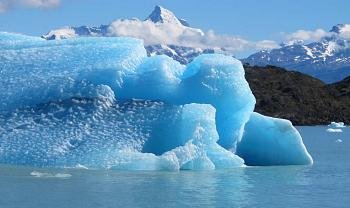The Melting Arctic Is a Real-Time Horror Story — Why Doesn’t Anyone Care?
In August 2018, scientists learned that 40-foot piles of compacted sea ice — some of the oldest and most durable clusters in the Arctic — are breaking away from the coast of Greenland and drifting out to sea. One meteorologist called it “scary,” but it was hardly unexpected. As the earth’s climate heats up, the idea of a “blue Arctic” — that is, the disappearance of sea ice for at least part of the year, leaving only open ocean — has long been predicted by climate scientists. Some researchers believe that you might be able to kayak to the North Pole as early as 2030; others think the sea ice might last until 2040 or longer.
The thawing of the Arctic is one of the biggest stories of our time, even if it is playing out at a pace and in a way that virtually guarantees most people will pay little or no attention to it. What’s going on is not a future concern, or simply a tragedy for polar bears; the warming Arctic is already having a tremendous impact on our world and may help explain much of the recent extreme weather, especially in the U.S. and in western Europe. To oversimplify this only slightly, you could argue that 2018’s historic wildfires in California were predicted by heat in the Arctic.
In recent years, the Arctic has been heating up faster than any other place on the planet. (In February 2018, temperatures in the Arctic were 45 degrees Fahrenheit above normal). That same year, German climate scientist Stefan Rahmstorf wrote an excellent piece in Politico explaining why the warming Arctic is not only causing ice to melt, but changing the weather dynamics for the entire planet. “That global warming leads to more heat extremes is not rocket science and has been confirmed by global data analysis,” Rahmstorf wrote. He pointed out that we are seeing five times more monthly heat records — such as “hottest July on record in California” — than we would in a stable climate. More heat means drier soils, causing more drought and wildfires. It also means more extreme rain, given that a warmer atmosphere can suck up and then release more moisture (a global increase in rainfall records is well-documented in weather station data).
But then Rahmstorf made a crucial point: “It’s not just that the weather is doing what it always does, except at a higher temperature level. Rather, there is growing evidence that the dynamics of weather itself are changing.”
Comments
There are 0 comments on this post








